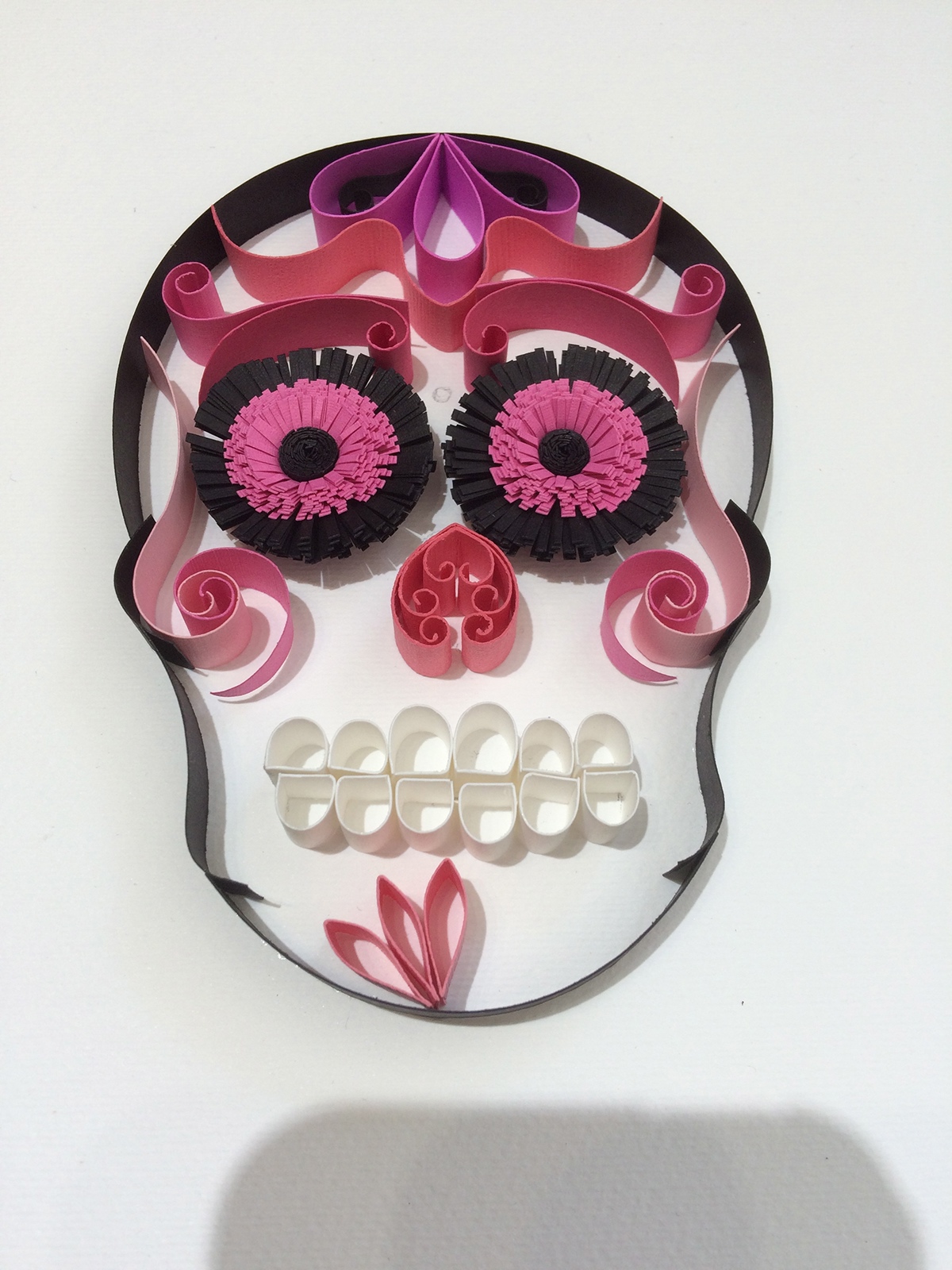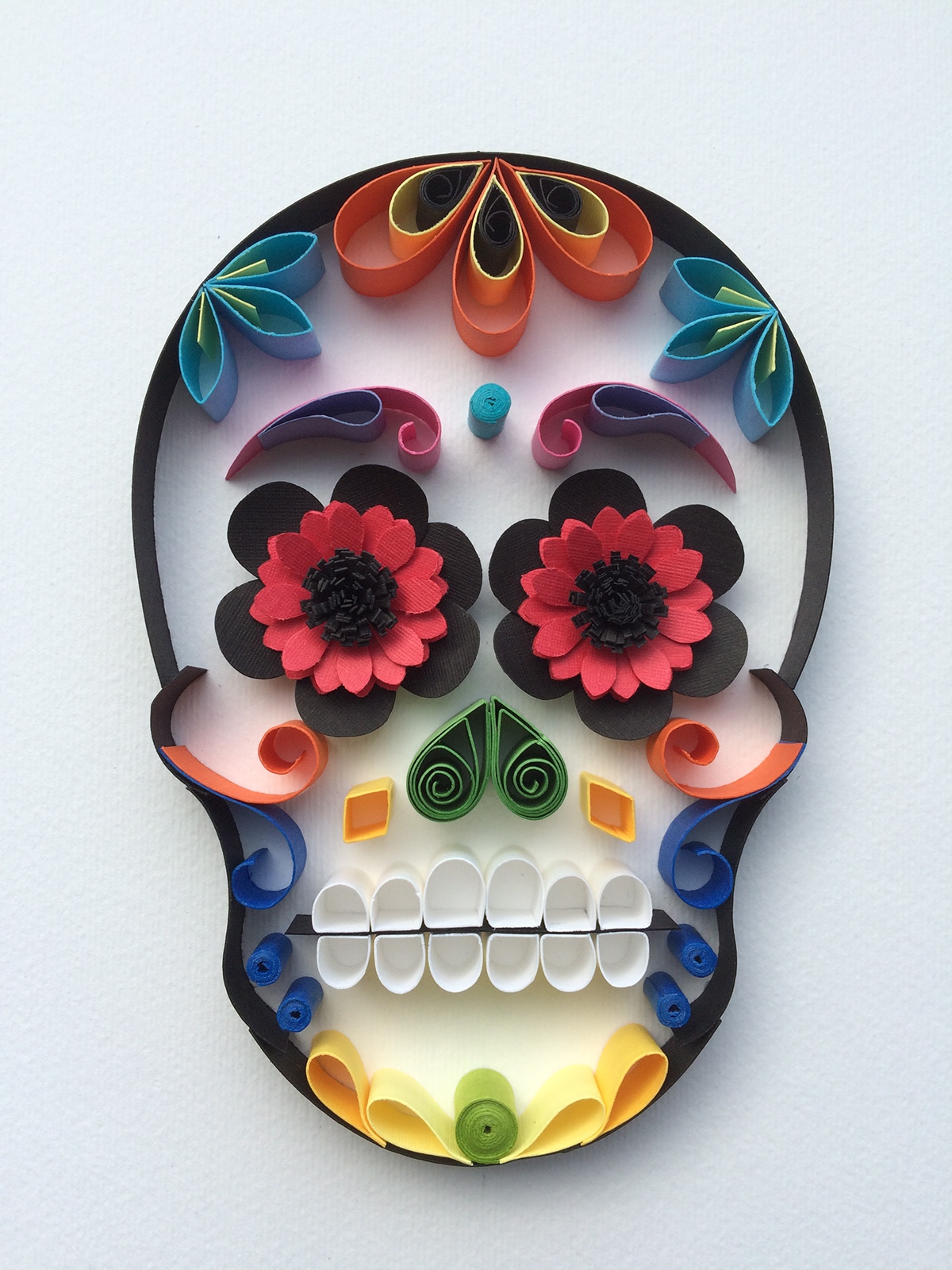




This first skull is named "Happy Face"





I decided to name this one "Pancho Villa"




This one is named "Doña Rosita"





Another "Happy Face"



"La Novia" or "The Bride"



"El Novio" or "The Groom"

I am Mexican and we celebrate on November 2nd "El Dia de Muertos" or "Day of the Dead". I decided to create a quilling version of these beautiful sugar skulls.
A little about the "Day of Dead" meaning:
Day of Dead is a Mexican holiday celebrated throughout Mexico, in particular the Central and South regions, and acknowledged around the world in other cultures. The holiday focuses on gatherings of family and friends to pray for and remember friends and family members who have died, and help support their spiritual journey. Also the people believe that the gates of heaven are opened at midnight on October 31, and the spirits of all deceased children (angelitos) are allowed to reunite with their families for 24 hours. On November 2, the spirits of the adults come down to enjoy the festivities that are prepared for them. In most Indian villages, beautiful altars (ofrendas) are made in each home. They are decorated with candles, buckets of flowers (wild marigolds called cempasuchil & bright red cock's combs) mounds of fruit, peanuts, plates of turkey mole, stacks of tortillas and big Day-of-the-Dead breads called pan de muerto. The altar needs to have lots of food, bottles of soda, hot cocoa and water for the weary spirits. Toys and candies are left for the angelitos, and on Nov. 2, cigarettes and shots of mezcal are offered to the adult spirits. Little folk art skeletons and sugar skulls. They believe that happy spirits will provide protection, good luck and wisdom to their families. On the afternoon of Nov. 2, the festivities are taken to the cemetery. People clean tombs, play cards, listen to the village band and reminisce about their loved ones.
Sugar art was brought to the New World by Italian missionaries in the 17th century. The first Church mention of sugar art was from Palermo at Easter time when little sugar lambs and angels were made to adorn the side altars in the Catholic Church. Sugar skulls represented a departed soul, had the name written on the forehead and was placed on the home ofrenda or gravestone to honor the return of a particular spirit. Sugar skull art reflects the folk art style of big happy smiles, colorful icing and sparkly tin and glittery adornments. Sugar skulls are labor intensive and made in very small batches in the homes of sugar skull makers. These wonderful artisans are disappearing as fabricated and imported candy skulls take their place.

